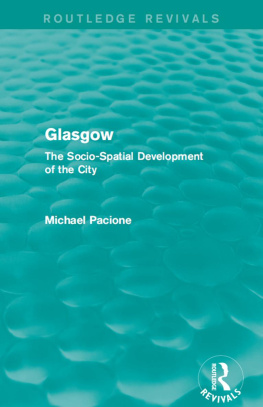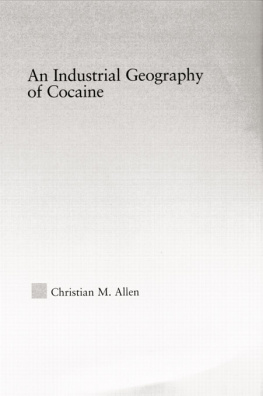Routledge Revivals
Progress in Industrial Geography
This edited collection, first published in 1985, deals with a number of the major themes central to the study of industrial geography. Topics under discussion include new methodologies, the growing service industries, foreign investment and the industrial geography of the developing world. With a detailed introduction from Michael Pacione and comprehensive coverage, the title reflects the extent to which the field of industrial geography changed over the second half of the twentieth century in response to economic change, incorporating the growth of multinational enterprises and the influence of globalisation, alongside traditional discussion of the manufacturing industry. Providing an essential background to developments in industrial geography, this title will be valuable to students with an interest in the economics, characteristics and advancement of industrial change.
First published 1985
by Croom Helm Ltd
This edition first published in 2013 by Routledge
2 Park Square, Milton Park, Abingdon, Oxon, OX14 4RN
Simultaneously published in the USA and Canada
by Routledge
711 Third Avenue, New York, N Y 10017
Routledge is an imprint of the Taylor & Francis Group, an informa business
1985 Michael Pacione
All rights reserved. No part of this book may be reprinted or reproduced or utilised in any form or by any electronic, mechanical, or other means, now known or hereafter invented, including photocopying and recording, or in any information storage or retrieval system, without permission in writing from the publishers.
Publishers Note
The publisher has gone to great lengths to ensure the quality of this reprint but points out that some imperfections in the original copies may be apparent.
Disclaimer
The publisher has made every effort to trace copyright holders and welcomes correspondence from those they have been unable to contact.
A Library of Congress record exists under LC control number: 85014938
ISBN 13: 978-0-415-70761-9 (hbk)
ISBN 13: 978-1-315-88667-1 (ebk)
1985 Michael Pacione
First published in 1985 by Croom Helm Ltd
Reprinted 2001
By Routledge
11 N ew Fetter Lane
London, EC4P 4EE
Routledge is an imprint of the Taylor & Francis Group
British Library Cataloguing in Publication Data
Progress in industrial geography (Croom Helm
progress in geography series)
1. IndustriesLocation 2. Geography,
Economic
1. Title
338.09 HC79.D5
ISBN 0-7099-2072-5
Library of Congress Cataloging in Publication Data
Main entry under title:
Progress in industrial geography.
(Croom Helm progress in geography series)
Includes index.
1. Industry Location Addresses, essays,
lectures. I. Pacione, Michael. II. Series.
HD58.P76 1985 338.6042 85-14938
ISBN 0-7099-2072-5
Typeset by Leaper & Gard Ltd, Bristol, England
Printed and bound in Great Britain by
Hobbs The Printers Ltd, Totton, Hants
CONTENTS
To Christine, Michael John and Emma Victoria
Since 1970 research in industrial geography has expanded significantly and the subject area now displays considerable diversity. Traditional approaches to industrial location through descriptive monitoring have been complemented by applied studies of policy and planning; by developments in theory in which neo-classical formulations have been challenged by behavioural and structuralist perspectives; and by increasing attention on the Third World and the operation of multinational corporations as part of a world economy. Links between national economic change and local trends, and the spatial influences of multiplant organisations, particularly in the context of regional economic development, have emerged as important issues within the geography of enterprise approach. Components of change analyses continue to provide a link between aggregate analyses and studies of individual firms, with particular attention focused on plant closures and redundancies. Related themes of contemporary concern include the phenomena of urban industrial decline and rural industrialisation, while the broadening perspective of modern industrial geography also incorporates service industries in addition to the traditional focus on manufacturing.
This collection of original essays is designed to encapsulate the major themes and recent developments in a number of areas of central importance in industrial geography. The volume is a direct response to the need for a text which reviews the progress and current state of the subject and which provides a reference point for future developments in industrial geography.
Michael Pacione
University of Strathclyde
Glasgow
The scope of industrial geography has changed greatly over the present century, The early emphasis on the location of manufacturing industry and on commodity flows has been enlarged, in the post-war period, in response to a number of wider social and economic changes. These include the growing importance of service industries, the growth of multinational and multiplant enterprises, increased direct government involvement in national economies, and the pervasive influence of the global economy on economic change at all scales. In change to the type and location of establishment. Study of ownership characteristics (e.g. whether locally owned or foreign controlled) can also provide further understanding of regional industrial structure, while studies of individual firms or of cohort groups offer valuable insight into entrepreneurial decisions. In contrast to the geography of enterprise perspective underlying behavioural theories the more recent structuralist approach emphasises the links between enterprises and the wider society in which decisions are the outcome of conflict between different power groups (e.g. capital and labour). In essence the structuralist approach does not employ abstract models of the firm, recognises spatial change as a product of non-spatial (structural) forces in the macro-economy, and focuses on particular product markets to explain the behaviour of different types of company. Application of this perspective is illustrated by considering the locational consequences of three types of production reorganisation (intensification, investment and technical change, and rationalisation). Particular attention is given to economic structures within local labour markets dominated by a single industrial employer. It is concluded that while the three major paradigms do represent a chronological development in industrial geography they are not mutually exclusive and elements of each can be usefully employed in the basic task of understanding the location and activity of industry.
In (awareness of possible contacts, local loyalties, risk minimisation), political (e.g. regional policy) and technological factors (such as process requirements). This is complemented by discussion of the influence of dispersal-inducing forces, such as improved communications technology, standardisation of production processes, and the growth of large industrial corporations. In the second part of the chapter, the geographical nature of industrial linkages is examined at both the aggregate industry and individual plant levels. At the macro scale, the related concepts of industrial linkage and spatial linkage are introduced and evidence presented to suggest that a significant relationship exists between the two, even in advanced economies in which dispersal-inducing forces are operating. At the micro level, analysis of research into the geographical scale of, and controls on industrial linkages emphasises the validity of a simple firm local linkage paradigm. Micro scale investigations of the relationship between actual and potential linkages, of linkage changes over time, and of the perceived importance of linkages in locational evaluations are also discussed. It is clear that the focus of attention in industrial linkage studies has moved away from the Marshallian agglomeration-through-linkage model towards a more spatially diffuse form of association in which the importance of physical distance is diminished. It is suggested that economic geographers must adopt a broader viewpoint, including, for example, analysis of the structure of manufacturing firms, if they are to fully understand the nature of the industrial linkages which form an integral part of the modern manufacturing process.



